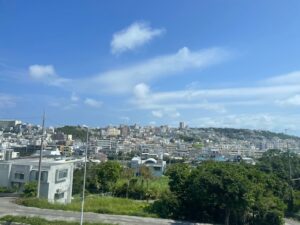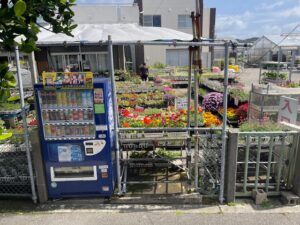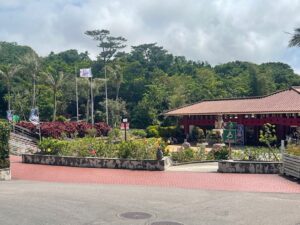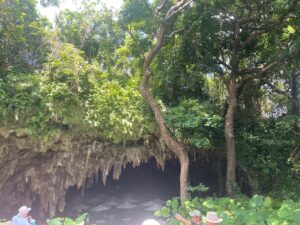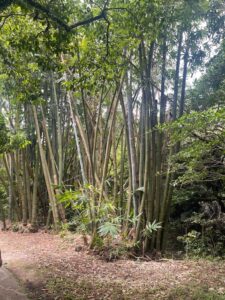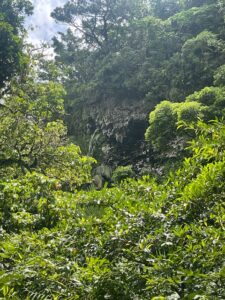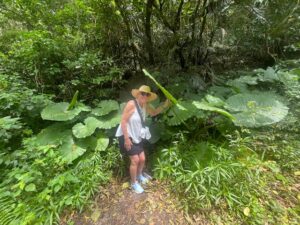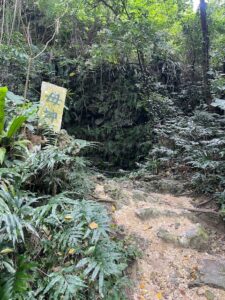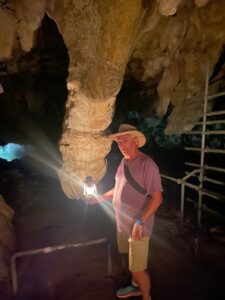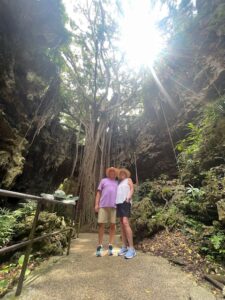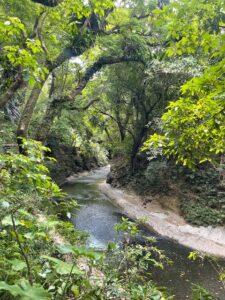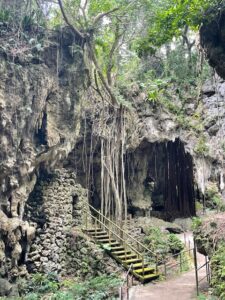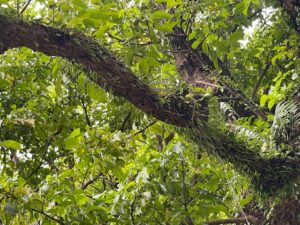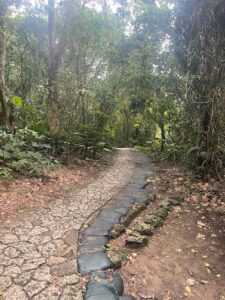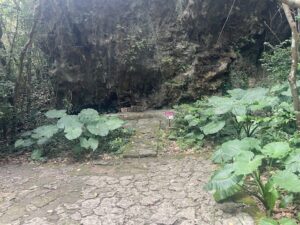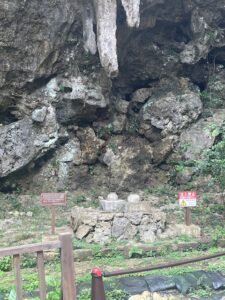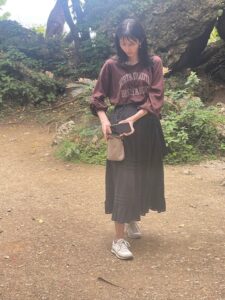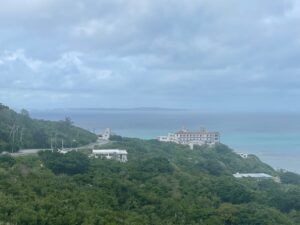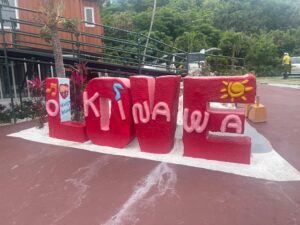
Naha is the capital city of Okinawa Prefecture, the southernmost prefecture of Japan. The city has an estimated population of 317,405. Naha is located on the East China Sea coast of the southern part of Okinawa Island. The modern city was officially founded on May 20, 1921.
Naha is a city with a long history of welcoming visitors ashore, this onetime capital of the Ryukyu Kingdom has been a seaport since the 1400’s. For a city with with such a long history, it seems surprisingly modern because most of the classic buildings were destroyed in battles near the end of WWII, some historic ruins still remain. There’s a ton of nature to see and we certainly did while here. Naha is also known for its delicious cuisine, with a variety of local dishes such as Okinawa soba, red rice, and goya champuru.
On the northern end of the island is the Kadena Air Base, the largest and most active US Air Force base in East Asia. They have 4000 housing units and over 20% of the Okinawa population is employed by the base. While locals do not like the noise pollution generated by the planes, they realize that the employment opportunities outweigh the down side of the disturbance. Okinawa’s long history and unique culture are a mix of Japanese and Chinese culture. The Revolution in 1868 brought major restoration to the area and Westernization began in the form of food, clothing, cars and culture. In 1945, Okinawa became part of the United States after the war and remained so until 1972 when it was given back to Japan. At that point, cars began driving on the left and the monetary system was changed over to Yen.
Okinawa citizens enjoy a long life expectancy and have many people over the age of 100. Our tour guide says that it is because of their diets. They eat a lot of pork and seaweed which adds collagen back into their bodies. The goya cucumber, another staple, is also known for its properties that contribute to longevity. Okinawa has the Pacific Ocean on one side and the East China Sea on the other. Because of the black current running in the Pacific Ocean, it has large numbers of tuna, bonito and yellow tail tuna used for consumption by its people. The islanders also count on typhoons to generate fresh water to the island and look forward to the rainy season.
Our excursions took us to the historical sites of Gangala Valley and Seifa Utaki. At Gangala we took a guided hike through the Gangala Valley. We entered through a cave that doubles as a meeting place and cafe. Its striking rock formations, dramatic plants and unusual trees can be seen at every turn. The rustic beauty of this unusual forested park is unrivaled. The Ufushu Gajimaru banyan tree is estimated to be more than 150 years old. Its roots have created large pillars that once delineated a sheltered place for prayer and communal gatherings. They have been excavating this site since 2008 and have found graves of bodies that are from ancient times. They hope to learn more about the forest inhabitants through this process. Many tools, jewelry and artifacts help shape the story.
After an incredibly delicious Japanese lunch we continued on to perhaps the most sacred site in Okinawa, Seifa Utaki, an outdoor Shinto shrine. A place of natural wonders, it has an especially calm and contemplative atmosphere. Ceremonial altars were created from the natural stone outcroppings, ledges and caves that are found on this rocky promontory overlooking the sea. Dirt and stone pathways wind through the forest and clearings. Stalactites drip “holy water” into pots once used to tell fortunes. This has been a sacred site since the earliest period of Okinawan history, and people still come here to pray and meditate.
These last couple of days we just had, may be our last of the hot and humid weather we have been experiencing throughout this cruise. We are looking ahead to three days at sea all headed north to our next stop in Beijing, China. Our cabin TV has local weather and looking ahead we are expecting highs in the 60’s rather than the extremely warm and humid temperature of late. I, for one, am looking forward to the need for a light jacket on deck. I wrote this yesterday and today we woke up to cloudy skies and windy, occasionally rainy periods with a high of 63. We did, in fact, have lunch outdoors with our jackets on and a blanket over our knees. It may be time to transfer some of our heavier clothing stowed under the bed in suitcases into the closet. You all know what this means if you have been reading our posts from the get go. Another chance for Joe to start pulling suitcases in and out from under the bed. Also, another chance for him to start staring into the closet wondering where I have placed things…just when he had started being able to dress himself…we will go back to square one.
Our Japanese guide in Okinawa had been with us in Miyakojima, during our tsunami experience and she had been terribly worried as it has become quite uncommon for them to be issued in the area. She had particularly good English skills and when we complimented her, she said she had studied at the University of Arizona in Tucson prior to returning to Okinawa. The history of tsunami events in Okinawa are a part of the history she shared. In the 1700’s a tsunami of such force moved limestone cliffs from one side of the island to the other. With this knowledge of past history she said an earthquake of the magnitude recorded in Taiwan, was nearly equal to the previous one that caused the historical tsunami. In our case, ignorance was bliss.
We are at sea for the next three days. Today (Friday) our trivia team, The Smarty Pants, won the prize for first place. We were given some packing cubes with the Seabourn logo on them just in time for our closet transfer that will likely occur during these sea days! “Timing is everything” seems to be the theme this week with a narrow escape from Taiwan prior to the earthquake and a miss on the tsunami in Miyakojima. Luck has been on our side. Maybe we should consider participating in the blackjack tournament at the onboard casino currently being held.
